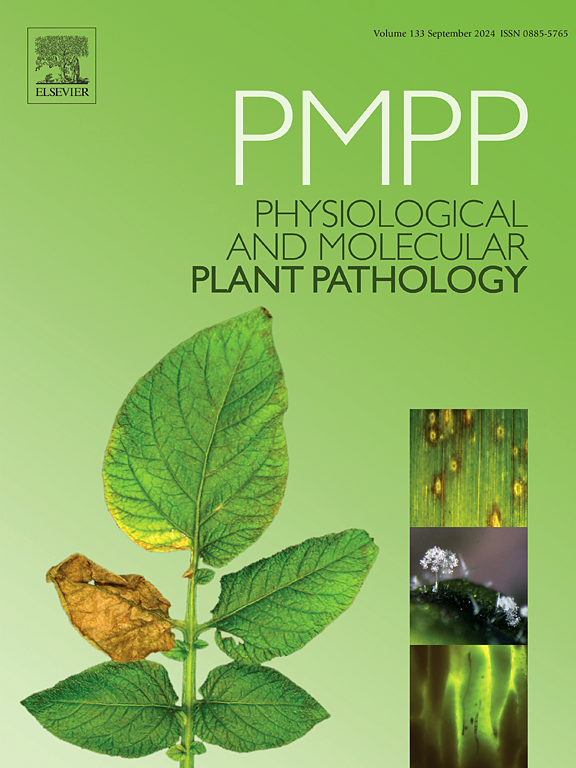UHPLC-DAD-MS phenolics profiling and nematicidal activity of aqueous extracts against citrus nematode Tylenchulus semipenetrans: In vitro and in vivo trials
IF 2.8
3区 农林科学
Q2 PLANT SCIENCES
引用次数: 0
Abstract
Tylenchulus semipenetrans poses a serious threat to citrus crops, affecting both open-field and protected cultivation systems. In this study, two experiments were conducted to evaluate the nematicidal efficacy of aqueous plant extracts (PAEs) derived from Moringa oleifera, Foeniculum vulgare, and Chamaemelum nobile against T. semipenetrans. The PAEs were tested under in vitro conditions to assess their effects on the mortality of second-stage juveniles (J2s) and egg hatching inhibition, while their phytochemical composition was analyzed using UHPLC-MS. In vivo experiments were also carried out on Citrus volkameriana to evaluate nematode development and plant physiological and biochemical responses to T. semipenetrans infection. In the in vitro assay, PAEs were tested at concentrations of 1 %, 4 %, 8 %, and 10 %, whereas the in vivo experiment was conducted with a 10 % concentration. The results demonstrated that PAEs effectively induced J2 mortality and inhibited egg hatching, with the effects varying according to extract type, concentration, and exposure duration. At a 10 % concentration, M. oleifera, F. vulgare, and C. nobile achieved significant (P < 0.0001, F = 57.17) J2 mortality rates, exceeding 55.78 % within 96 h, while egg hatching inhibition surpassed 92 % after 144 h. The in vivo experiment revealed a substantial reduction in T. semipenetrans populations compared to the control. Additionally, significant increases in shoot fresh weight (p < 0.004, F = 10.12), shoot dry weight (p < 0.001, F = 15.46), root dry weight (P < 0.02, F = 5.49) and root length (p < 0.01, F = 17.91) were observed. X-ray fluorescence (XRF) analysis indicated higher levels of essential elements such as silicon, iron, and calcium in plants treated with M. oleifera and C. nobile. Moreover, the application of PAEs led to notable biochemical and physiological changes, including increased proline, peroxidase, polyphenol oxidase, and catalase activities, along with higher malondialdehyde (MDA) content. This study is the first to report the effects of these PAEs against Moroccan populations of T. semipenetrans, highlighting their potential as alternative botanical nematicides.
求助全文
约1分钟内获得全文
求助全文
来源期刊
CiteScore
4.30
自引率
7.40%
发文量
130
审稿时长
38 days
期刊介绍:
Physiological and Molecular Plant Pathology provides an International forum for original research papers, reviews, and commentaries on all aspects of the molecular biology, biochemistry, physiology, histology and cytology, genetics and evolution of plant-microbe interactions.
Papers on all kinds of infective pathogen, including viruses, prokaryotes, fungi, and nematodes, as well as mutualistic organisms such as Rhizobium and mycorrhyzal fungi, are acceptable as long as they have a bearing on the interaction between pathogen and plant.

 求助内容:
求助内容: 应助结果提醒方式:
应助结果提醒方式:


